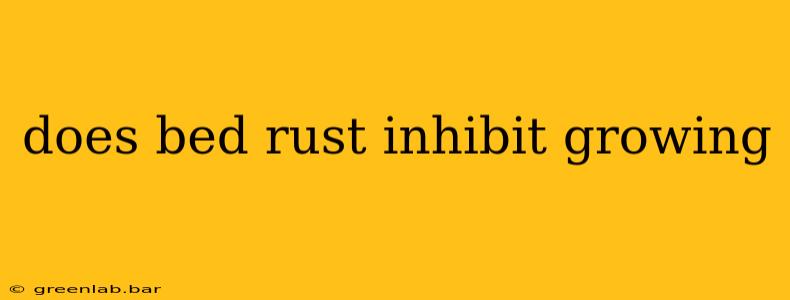Does Bed Rust Inhibit Plant Growth? Uncovering the Truth About Rust and Your Garden
The sight of rust on your gardening tools or even your old metal bed frame might make you wonder: Does bed rust inhibit growing plants? The short answer is a nuanced "it depends." While rust itself isn't directly toxic to plants in small amounts, the chemical composition and potential leaching of certain elements can negatively impact plant health in various ways. Let's delve deeper into the specifics.
Understanding the Composition of Rust
Rust is essentially iron oxide, a compound formed when iron reacts with oxygen and water. Different forms of iron oxide exist, each with slightly varying chemical properties. The crucial point is that while iron is an essential micronutrient for plants, excessive amounts can be detrimental.
How Rust Can Affect Plant Growth
-
pH Imbalance: Rust can alter the soil's pH, making it either too acidic or too alkaline for optimal plant growth. This is particularly true if significant quantities of rust are leaching into the soil. Most plants thrive within a specific pH range; an imbalance can hinder nutrient uptake and overall health.
-
Nutrient Toxicity: While iron is essential, an excess can lead to iron toxicity, which manifests as yellowing leaves (chlorosis) despite sufficient iron in the soil. This occurs because the plant's ability to regulate iron uptake is overwhelmed. Other elements within the rust, depending on the metal's composition, could also contribute to toxicity.
-
Soil Contamination: Rust particles themselves can physically affect the soil structure, potentially reducing aeration and water drainage. This can lead to root suffocation and hinder nutrient absorption.
-
Indirect Effects: The presence of rust often suggests other potential problems. For instance, a rusty bed frame might indicate a poorly drained area prone to moisture accumulation, which could create fungal diseases or other issues harmful to plants.
When Rust is Least Likely to Cause Problems
-
Small Amounts: A tiny amount of rust flakes from a well-weathered tool or a small spot on a metal object buried deep in the soil is unlikely to cause significant issues for most plants.
-
Well-Drained Soil: In well-drained soils, the leaching of iron from rust is less likely to accumulate to toxic levels. The water carries away excess minerals.
-
Resistant Plant Species: Some plant species are more tolerant to fluctuating soil pH and higher iron concentrations than others.
What to Do If You're Concerned
If you're concerned about rust affecting your plants, several precautions can be taken:
-
Remove Obvious Sources: If possible, remove large sources of rust, such as heavily rusted objects, from the immediate vicinity of your plants.
-
Soil Testing: Conduct a soil test to determine the pH and nutrient levels. This will help you understand if rust is contributing to any imbalances.
-
Amend the Soil: Based on soil test results, you might need to amend the soil to adjust the pH or add organic matter to improve drainage and aeration.
-
Monitor Plant Health: Keep a close eye on your plants for any signs of stress, such as wilting, yellowing leaves, or stunted growth.
In conclusion, while rust itself isn't a direct plant killer, it can indirectly impact plant health through pH imbalances, nutrient toxicity, and soil structure alterations. The severity depends on the amount of rust, the soil conditions, and the plant species involved. Careful monitoring and proactive soil management are key to mitigating any potential negative effects.

